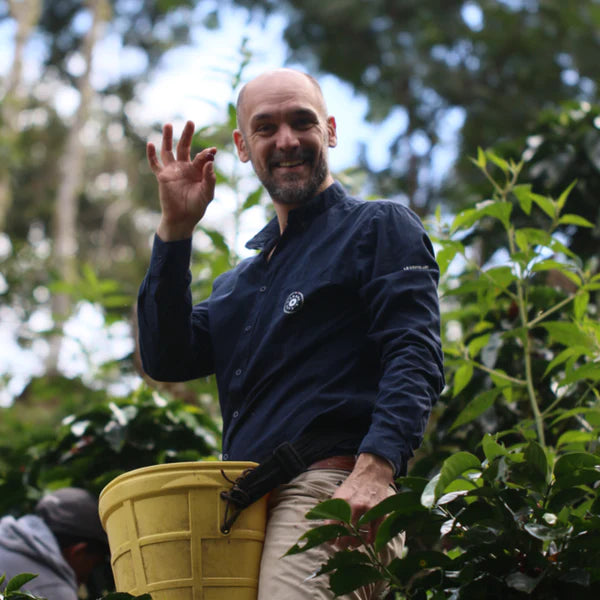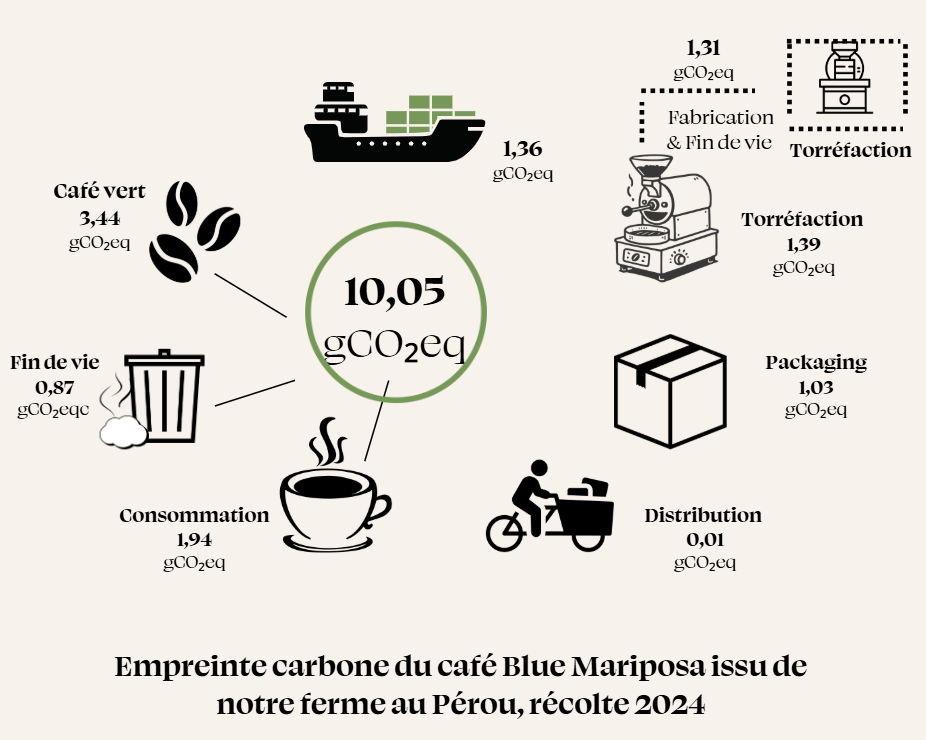15 years after the "invention" of the New Naturals, the debate continues, the quarrel still rages between the proponents of the Washed (wet process) and those of the Natural (dry process).
This is how much this difference is structuring in the coffee and how much the tastes and the colors feed the discussions.What are these two processes or fermentations? What is the difference between them? And why are they so often opposed?
Dry and wet: the two key processes or fermentations of coffee
It is indeed the dry way and thus the natural coffee (or "natural coffee") that appeared first, and even concomitantly with the birth of coffee.
Originating in a dry tropical country during the season, coffee is derived from the harvest of a fruit, the cherry of the coffee tree, dried in the sun, formerly on the ground. The dried fruit dehydrates and its skin sticks to the beans until it is completely dry and therefore crumbly.
Depending on the level of humidity, drying can take more or less time and therefore involve more or less risk of mold, a bit like when you forget apples on the table, or the table is in full sun and in a ventilated place, or the apples rot before drying.
For coffee cherries, it is the same thing. When the coffee tree was acclimatized in Yemen, the climate was also very dry, and this process continued.

Everything changes in the 17th and 18th centuries
But everything changed with the diffusion of coffee growing by the Dutch and then by the French at the turn of the 17th and 18th centuries. The so-called Dutch Indies (Java etc...) and the West Indies are characterized by climates, certainly hot, but humid. It is impossible in these latitudes to dry a fruit in the sun, even one as thin and pulpless as a coffee cherry.
How to accelerate the drying of grains?
This was the question that the first non-African coffee growers asked themselves. The answer was immediate, because from the beginning of the 18th century, we have traces of the first pulpers. The wet process was thus invented.
By taking the cherry just picked, it is passed through a pulper that removes the skin, the seeds are then naked and covered with a light layer of fruit pulp. In order to get rid of this pulp or fruit flesh, the seeds are put in tanks to ferment. Why? Because fermentation is the degradation of organic matter by micro-organisms, mainly bacteria and yeast.
Fermentation, the key to the wet method
By closing the beans, the pulp is removed and the beans are completely exposed. Following the pulping and fermentation, the coffee beans have lost their first two layers: the skin (the bark / cascara) and the flesh. Thus, they will be able to dry, not in thirty days, but in a maximum of ten!

So why isn't this method called "depulping"? After the fermentation, and in order to get rid of the last residues and especially to stop any fermentative process, the grains are washed in channels or water basins.
By shaking them in running water, they lose their last residue. They are washed once or twice, fermented once or twice as in Colombia or East Africa, as in the case of Maravilla and Bourbon Pointu from Reunion.
On the time scale, the original coffee is therefore Natural, then Washed. The dry way is tradition, the washed way is modernity.
Are washed coffees of better quality?
Washed coffees have been dominant in the quality market for a long time.
They are fermented, washed and dried quickly. The fermentation process develops complexity and acidity, from 30 to more than 300 aromatic characteristics. The washing and quick drying process ensures hygiene and prevents defects due to drying and contamination. For a long time, washed coffee has been synonymous with quality.
While the natural coffee knew and still knows often for the inferior qualities of the characteristic defects. By leaving the fruit to dry on the ground, it partly rots, absorbs dust and dirt and is attacked by various fungi. The taste of natural coffee was therefore for a long time that of decay, fermenting notes (vinegar, musty, reduction, fungus...) long hated by consumers and producers. The natural coffee was therefore the cheap, the not noble and still today, represents more than 90% of canephora (robusta).

The appearance of new processes: Honey, Pulped Sun Dried, Slow-Dried and Semi-washed
Yet, at the dawn of the 21st century, the lines have shifted considerably. On the one hand, processes or fermentations have attracted attention, and so the specialty coffee revolution began, and it began with care for every step of the fermentation process.
The producers have therefore gradually improved the fermentation and processing of their coffee. They have also redoubled their inventiveness and creativity. Today, the washed and dry ways are not the only ones. Treatments such as honey, pulped sun dried as for the Red Iapar from Brazil, semi-washed, carbonic as for the Maravilla, carbonic slow-dried as for the AfterGlow Geisha, yeast, thermoregulated as for the Chakra Do Dago etc., etc., have been developed and enrich the palette of coffee

Washed coffee facing the environmental issue and the overconsumption of water
On the other hand, the washed coffee had to face the criticism of the local populations and of some clear-sighted consumers,that of the overconsumption and the pollution of the water. By washing the fermented coffee with water, the water is loaded with bacteria, yeast and active fungi, thus creating asphyxiation and making it unfit for consumption. The amount of water used was also considerable. The progress has been important and the producers of L'Arbre à Café all use machines that reduce water consumption. They need less than 8 liters of water to process 100kg of coffee as in Chakra do Dago or Sidamo Bunna Bet.

The revival of natural coffees
At the same time, in Brazil in particular, some producers, inspired by the Honey process revolution, have decided to consider natural coffee as a coffee with great potential .
It was in this country that the New Natural was born and the first quality competitions for dry-process coffees were held. No more rotten tastes, no more mushroom and damp earth tastes, no more prohibitive fermenting aromas. Hello, sweetness and softness, hello intensity and fruitiness, hello refreshing acetic acidity as in Gedeo, Hayma, Natural Pacamara or Caturra.

The adoption of coffee by Asian countries, accustomed to fermented tastes, has created a formidable sounding board for these New Naturals.
Today, the debate about washed and natural is still real but less so because it is focused on a question of limits: is the coffee I taste too natural, with notes of vinegar and overripe fruit, or not? Does it remind me of culturally unfit foods or on the contrary delicious?
The commercial backdrop of highly matured foods, such as beef, or freely fermented foods, such as natural wine but also Komboucha, means that the relationship with fermentative notes and acidities linked to fermentation has changed a lot in recent years. The defects of yesterday, because they are now worked on and controlled, make the quality of today.
In the tastings, we still see small quarrels between those who think that such and such a coffee is exceptional because it is marked by notes of olive and cocoa and wine, while others consider it "over-fermented" because it is vinegary.
Natural coffee and washed coffee have thus become a question of culture and not of objective quality, and that's good!




















